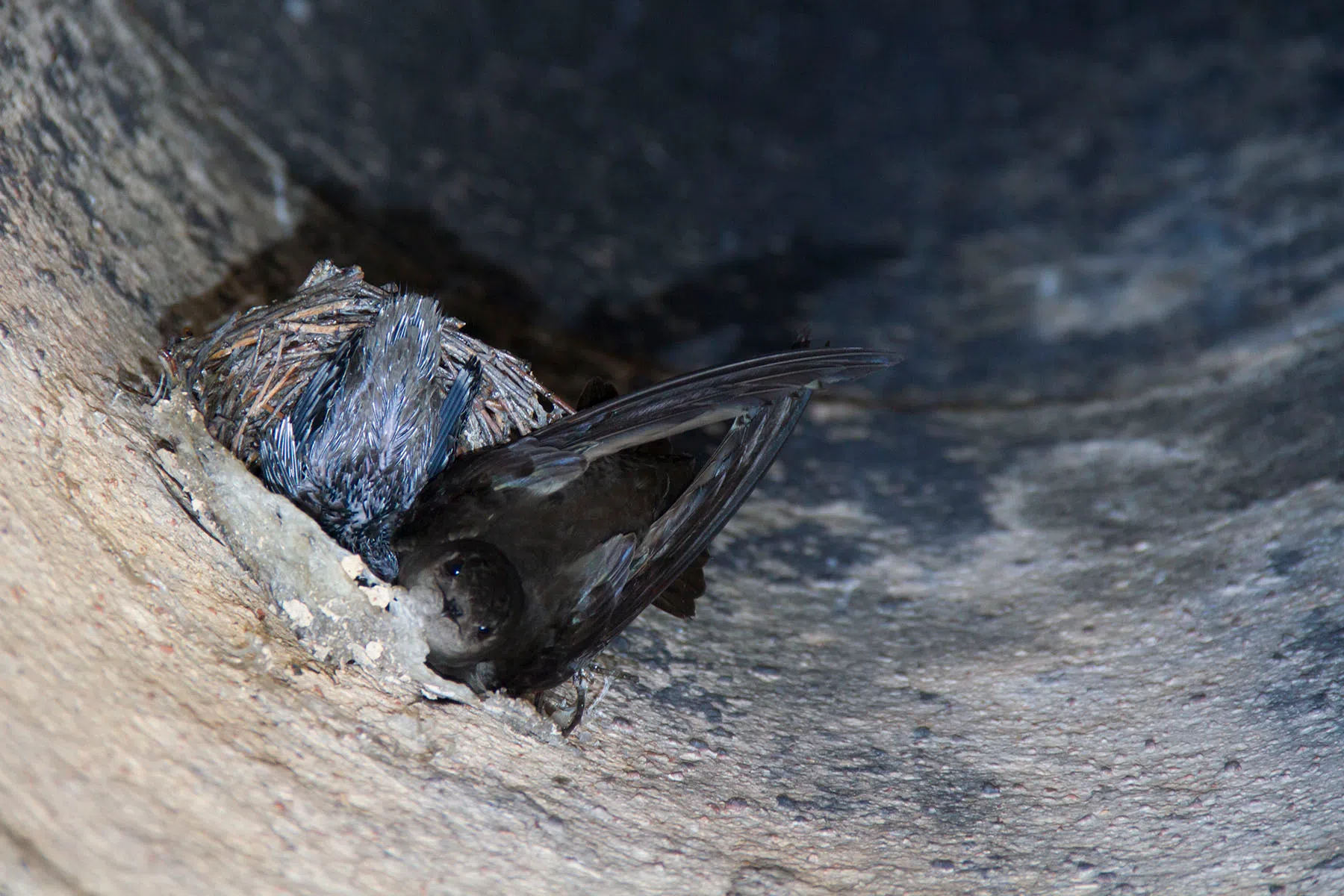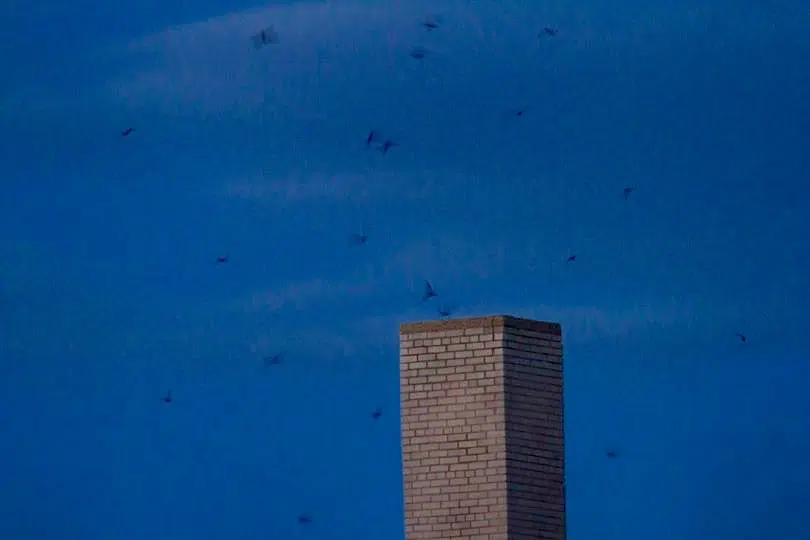The following article is written for the Ripples From the Dunes series by Nancy Nabak.
I usually expect the kids to be home around the middle of May. For the most part, they’re usually on time. It’s not college they’re migrating from – it’s South America and my “kids” are actually the Chimney swifts that are nesting in our chimney at Woodland Dunes.
This year, they got home on May 17th. I know this because my office desk is near our chimney and I can hear when they’ve made it back and are ready to nest for the season.
My office partner, Jen, and I have been documenting their activities by sound for the last four years. We try to record each time we hear them, whether it sounds like twitters, chirps or wings flapping and hitting the pan that seals off the old pipe hole. By doing this, we’ve started to learn about their nest building activities, how long they go between “noises” in the chimney (out foraging?), and when there’s food begging activity of baby swifts. We’ve even witnessed them vocalize after being startled from a loud thunderclap during a storm this summer. It’s like nothing else I know and pure music to my ears.
On July 21st we heard no more swift music. My babies fledged and all of my kids were gone again. The house is silent. Selfishly, my daytime company has left me and I miss it. However, the good news is that this means we had another successful year of Chimney swifts nesting at Woodland Dunes.
Now is the time that Chimney swifts start forming up in communal gatherings before migrating south. This gives us an excellent opportunity to gauge their population numbers and try to assess trends for this species. Unfortunately, according to the latest North American Breeding Bird Survey, the Chimney swift population has declined by 72% in the past 50 years. By monitoring it, we might learn more so we can find ways to help protect it.
Woodland Dunes and Two Rivers Main Street are asking bird watchers and local community members to help count swifts entering chimneys at dusk in the next two to three weeks. If you can count, you are capable of helping. This is part of a continent-wide program called Swift Night Out held to raise awareness about this declining bird species. Main Street has wonderful historic structures that are home and habitat to swifts, so a wonderful place to look for them at dusk.
Great spots to watch in Two Rivers that have been successful in the past are: Cleveland Cycle Works and Two Rivers Christian Thrift Store on Washington Street and the old vacant florist shop on Mishicot Road. Two years ago, over 200 swifts were documented entering the Two Rivers Water & Light Utility chimney. When sites are this active, it’s like watching a “tornado of birds” funneling into the chimney – an amazing sky show that you’ll never forget.
Any evening now through early September is a good time to watch and record sightings. To request a tracking form, please contact Nancy Nabak, nancyn@woodlanddunes.org.
Chimney swifts nest in eastern North America in the summer and migrate to South America in the fall. Before European settlement, the birds nested in old-growth forests. As these forests disappeared, the birds discovered that brick chimneys served as an abundant replacement. Brick chimneys work well for the birds because the chimneys provide enclosed areas with a rough, vertical surface the birds can cling to, much like a hollow tree. Unlike most birds, chimney swifts do not perch on branches but use the sharp nails on their tiny feet to cling to the sides of their roost.

CC / Nancy Nabak
Tips on how and where to look for chimney swifts
Identification: Chimney swifts have slender bodies, with long, narrow, curved wings and short, tapered tails (look like a flying cigar). They fly rapidly, with nearly constant wing beats, often twisting from side to side and banking erratically. Often, they give a distinctive, high chittering call while in flight. They are the only bird that will roost in a chimney, dropping inside, at night.
Because chimney swifts congregate in communal roosts before migrating in late summer/fall, it’s relatively easy to count them. Here’s how to count:
Look for tall brick chimneys that are uncapped. Watch to see where swifts are feeding and congregating. Pick a night to monitor around the second week in August. Observe the roost starting about 20 minutes before sunset until 10 minutes after the last swift enters the chimney. Count (or estimate) the number of swifts as they enter the chimney. It’s useful to count in groups of five or 10 when they enter quickly in large numbers. Contact Nancy Nabak for a tracking sheet and to turn in monitoring results.
More information about chimney swifts and how to help protect them locally, go to https://www.wiswifts.org/swift-night-out/
For more information about Swift Night Out, please contact: Nancy Nabak at nancyn@woodlanddunes.org.





